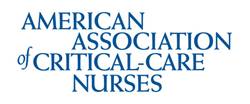Newswise — Critical care nurses are ideally positioned to drive full integration of palliative care into the care of all patients who are seriously ill, including patients with COVID-19, according to an article published in the December issue of Critical Care Nurse (CCN).
Palliative care is an approach that focuses on alleviating suffering throughout the course of serious illness but is often and erroneously associated solely with the end of life or the actively dying patient. However, integrating palliative care earlier in the care trajectory greatly increases its benefits for patients, their families and the healthcare providers who care for them.
“Increasing Critical Care Nurse Engagement of Palliative Care During the COVID-19 Pandemic” offers resources and strategies to support critical care nurses in alleviating health-related issues during the pandemic and strengthens their capacity to deliver high-quality, person-centered care.
The authors urge that, ultimately, palliative care is critical care and now is the time to stop separating the two.
Co-author Billy Rosa, PhD, MBE, ACHPN, FAANP, FAAN, is a postdoctoral research fellow in psycho-oncology at Memorial Sloan Kettering Cancer Center in New York. Other authors are palliative care pioneers with the End-of-Life Nursing Education Consortium (ELNEC): ELNEC founder Betty Ferrell, PhD, RN, FPCN, FAAN, City of Hope, Duarte, California, and Clareen Wiencek, PhD, RN, ACNP, ACHPN, FAAN, University of Virginia School of Nursing, Charlottesville.
“The urgent need for palliative care integration throughout critical care settings has never been more crucial,” Rosa said. “Critical care nurses are the front-line responders ideally positioned to translate its holistic, person-centered approach into practice.”
Although the focus of admission to an intensive care unit (ICU) is life-sustaining treatment, it often results in aggressive attempts to prolong life at all costs. The COVID-19 pandemic is increasing patients’ pain and morbidity, as well as exacerbating already high levels of workplace stress, burnout and moral distress for clinicians.
The authors’ recommendations include the following:
- Palliative care should be integrated throughout the practice of high-quality critical care to ensure the holistic needs of patients and families are met in these uncertain times.
- Critical care nurses deserve to practice in healthy work environments that include resources for their own self-care, during times of crisis and times of normalcy.
- Symptom management protocols, communication frameworks and goals-of-care discussions should be the standard of care, not the exception.
- Care of family and social support caregivers must be a priority at the unit and system levels during this crisis and in the future.
- Nurses and their teams must integrate primary palliative care for each patient and consult with palliative care specialists in more complex cases.
- All front-line healthcare providers must have the guidelines, equipment and personal protective equipment to provide high-quality care and to be safe in the setting of contagious transmission.
In addition to the resources included with the article, the American Association of Critical-Care Nurses, which publishes CCN, offers resources and tools to help nurses care for patients and their families at the most difficult times of their lives, including an e-learning course and a free, online self-assessment tool. For more information on palliative and end-of-life care, please visit www.aacn.org/palliativeedu.
As AACN’s bimonthly clinical practice journal for acute and critical care nurses, CCN is a trusted source of information related to the bedside care of critically and acutely ill patients.
Access the article abstract and full-text PDF by visiting the CCN website at http://ccn.aacnjournals.org.
About Critical Care Nurse: Critical Care Nurse (CCN), a bimonthly clinical practice journal published by the American Association of Critical-Care Nurses, provides current, relevant and useful information about the bedside care of critically and acutely ill patients. The award-winning journal also offers columns on traditional and emerging issues across the spectrum of critical care, keeping critical care nurses informed on topics that affect their practice in acute, progressive and critical care settings. CCN enjoys a circulation of more than 120,000 and can be accessed at http://ccn.aacnjournals.org/.
About the American Association of Critical-Care Nurses: For more than 50 years, the American Association of Critical-Care Nurses (AACN) has been dedicated to acute and critical care nursing excellence. The organization’s vision is to create a healthcare system driven by the needs of patients and their families in which acute and critical care nurses make their optimal contribution. AACN is the world’s largest specialty nursing organization, with more than 130,000 members and over 200 chapters in the United States.
American Association of Critical-Care Nurses, 27071 Aliso Creek Road, Aliso Viejo, CA 92656; 949-362-2000; www.aacn.org; facebook.com/aacnface; twitter.com/aacnme
